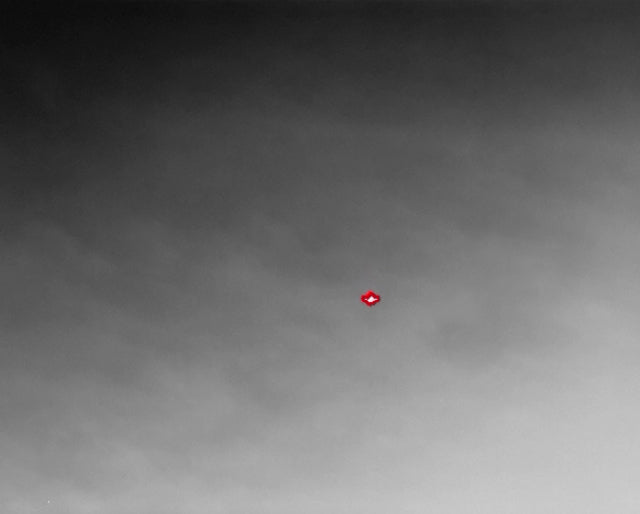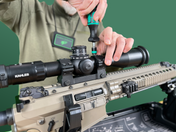Abgerundet wird das neue Modell mit dem neuen Outlinemodus, der zusätzlich zu jedem der 15 bekannten Filter hinzugeschaltet werden kann. So werden die wärmsten Objekte im Bild zusätzlich durch eine rote Umrandung markiert. Im Folgenden werden die Neuerungen im Detail beschrieben:
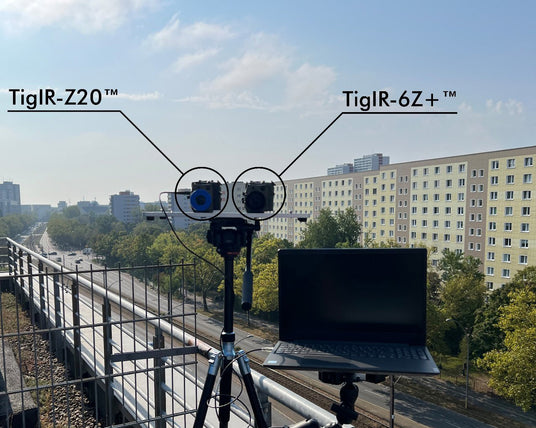
20mK sensor performance
Until recently, such performance values were unthinkable for uncooled thermal imaging sensors and could only be found in cooled sensors, which cost several times more. To illustrate the differences between the two quality levels, we made comparison videos with two devices and compared them.
40mK
20mK
Sollte die interaktive Darstellung sich nicht mit Ihrem Browser laden lassen, finden sie hier die YouTube-Version.
Uns war es wichtig, dass wir nicht zu viel versprechen wollen. Es soll gezeigt werden, dass die Unterschiede bei der Thermalauflösung sehr Wetteranhängig sind. So sind die Unterschiede bei Sonnenschein nicht besonders groß, denn auch der schlechtere Sensor profitiert von der hohen Dynamik der Szene. Das bedeutet, dass durch die Sonneneinstrahlung sehr starke Kontraste entstehen, die auch ein 40mK Sensor gut darstellen kann. Es ist auch recht gut zu erkennen, dass Personen in der Darstellung bei beiden Geräten nicht besonders gut hervortreten, da auch der Hintergrund sehr warm ist, und daher keine Unterschiede auftreten. Es lässt sich also festhalten, dass Sonnenschein auch bei 20mK-Geräten nicht hilfreich ist.
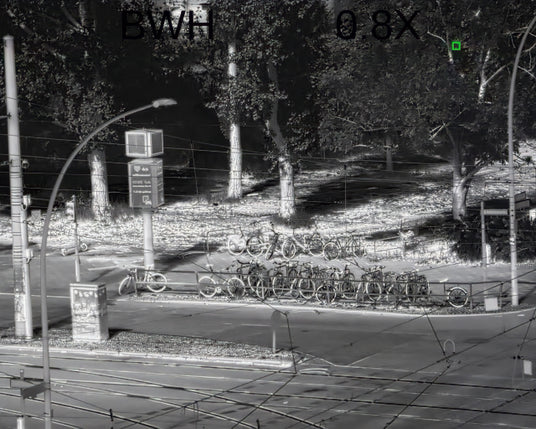
AI image optimization
A lot has happened here too. Even in the display with 640x512 pixels (0.8x magnification), objects are spatially better and more finely resolved. In some cases, the tram's overhead wires are only visible with the TigIR-Z20. This is due to a new algorithm that interprets image elements much more precisely and optimizes them for the current screen resolution. It still proceeds cautiously and does not result in so-called "hallucinations" as are known from other AI techniques. So what is shown to you is actually there.
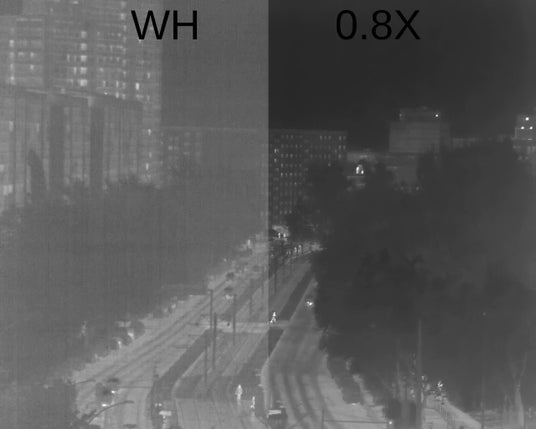
What is also noticeable is that the noise and the PNP (Permanent Noise Pattern) are significantly suppressed in homogeneous image areas. This is particularly noticeable in poor weather conditions such as rain over long distances. The combination of high thermal resolution with powerful image optimization leads to the best results here.
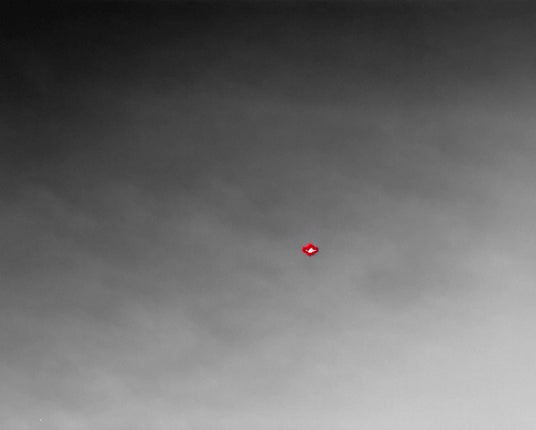
outline mode and drone detection
In outline mode, a red frame is drawn around the warmest objects. The idea here is that even very small or distant objects that are only a few or only one pixel in size are clearly highlighted. This can be helpful at dawn, when people or small animals are more visible at great distances due to even heat distribution. However, other objects that are also warm can also cause interference with this function. The advantage of outline mode is therefore best seen when it is used to search for small objects in the sky. Here, even small drones can be detected at greater distances and more clearly than without this function.
The outline mode can generally be combined with all of the 15 other filters. However, its use is sometimes limited due to the red color.
It is switched on and off by pressing a button during operation.


